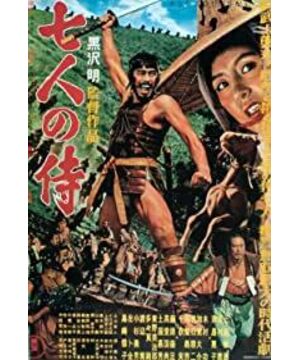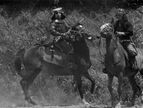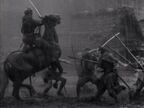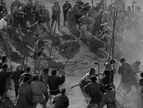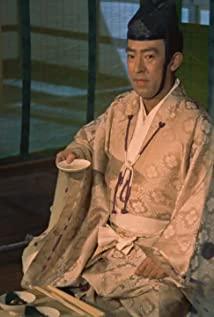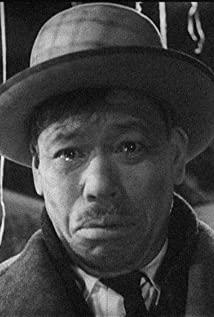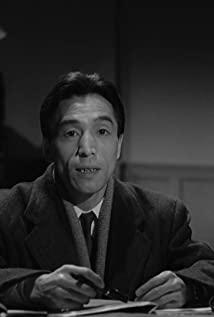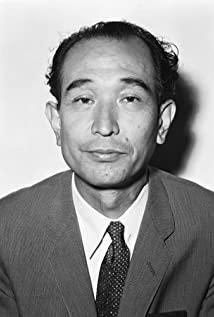Every director who wants to make a good group play should study Akira Kurosawa's "Seven Samurai". The difficulty of filming a group scene is that there is not enough time to fully display each character. If the filming is not good, it is easy to show that the character's personality is not clear enough, and some characters may even feel superfluous and boring. But "Seven Samurai" is very successful in the portrayal of group portraits, which is also the highlight of this movie. Let's analyze the scenes of the important characters in "Seven Samurai" one by one.
First of all, the samurai is the absolute protagonist, so the peasants and the bandits can only give a very limited role. The farmers mainly portrayed the first few who were looking for the samurai, the village chief and the heroine, and the bandits were in addition to the leading mountain belt king. Besides, I didn't even give a face shot, which is to tell the audience that the bandits and most of the villagers are not important at all, just soy sauce boys.
The first samurai to appear is Kanbei. Akira Kurosawa gave Kanbei ten minutes to save the hostages with wisdom that had nothing to do with the main storyline, just to highlight his calmness, courage and prudence, intending to tell the audience that this would be a very important role.
Just when Kanbei finished saving the man and left, several farmers were about to ask him for help, but they were preempted by two other people, namely the second samurai Katsushiro and Kikuchiyo who pretended to be a samurai. Katsushiro was conquered by Kanbei's boldness and wanted to be his teacher. Here it is very clever to avoid the use of ink to describe the appearance of the second samurai, and at the same time tell the audience that Katsushiro may be a supporting role in the seven. On the other hand, Kikuchiyo made some sand sculptures with his teeth and claws. After Kanbei revealed the truth about his disguise as a samurai, he left angrily, leaving a foreshadowing.
Several farmers finally had the opportunity to ask Kanbei for help, hoping he could save the village from the bandits. The kind Kanbei agreed to the villagers, but bluntly said that to deal with 40 bandit cavalry, at least 7 samurai were needed. So began the plot of recruiting horses, and Kanbei naturally became the core character of the team.
Next, the third samurai Goro and the fourth samurai Shichiro wrote very limited ink, one of them was Kanbei's old comrade-in-arms, and the other was a brushstroke. The fifth samurai, Heihachi, was a down-to-earth stray. Originally, he was helping the peasants to chop firewood, but he was persuaded to join the team. The dialogue that occurred in the middle directly told the audience that this character might be an active character, and it was not very important.
The appearance of the sixth samurai was very grand. The director filmed a samurai duel to show the sixth samurai Kuzang's quest for defeat, his high martial arts, and the invisible murder. Seeing this, the audience can basically confirm that Jiuzang is the absolute guarantee of the team's strength. He was spotted by Kanbei at a glance, but unfortunately he rejected Kanbei's request. After all, it would be boring for the most popular person to join so easily. Probably the reason is that he only has martial arts in his heart and is not interested in protecting farmers, not to mention The payment is only three meals a day. However, Kanbingwei still left the address of the inn before he left. This is also a bridge that often appears in later movies. It is a relatively advanced method of pulling people, giving others some room for consideration and repentance.
Just as the five recruited samurai were discussing how to deal with bandits in the inn, Kuzo suddenly appeared in front of everyone and planned to join. Everyone planned to rest and set off tomorrow. The foreshadowing that was buried before Kikuchiyo suddenly ran over to disrupt the situation. It turned out that he was drunk and went to steal someone else's family tree to prove to Kanbei that he was a samurai. Under the teasing, he accidentally became the seventh "samurai". So far, the three most important samurai images have already appeared on the paper: Kanbei, the core brain of the team, Kuzura, the most powerful team, and Kikuchiyo, the "peasant" who is the most nonsensical and sand-sculpted in the team.
Then there was a conflict in the plot of the Seven Samurai entering the village. The main reason was that the yellow flower girl in the village, who was also the only female character in the film, was forced by her father to cut her hair, and the reason why her father forced it was because he was afraid that the samurai would see his daughter's heart. meaning. This naturally caused panic among the villagers, so there was some friction with the samurai, but at the same time, it was also a process of mutual understanding and familiarity between the two classes.
Then the seven samurai led the peasants and the bandits to defend the city. The filming was quite exciting. It can be called a cheap and low-end version of "The Lord of the Rings: The Two Towers", especially the battle scene with the bandit cavalry, which can be called infantry VS. Video textbook of cavalry. The think tank Kanbei made plans based on the terrain, and killing the enemy for a long time was like walking in the courtyard. The other four samurai have relatively few scenes, so the plot development will obviously make the audience feel very indifferent. Therefore, in the first sneak attack, the samurai Heihachi, who had the least sense of existence, died in battle to save a villager. On the battlefield, becoming the first sacrifice among the Seven Samurai brought a certain psychological impact to the audience, and also showed the noble character of the samurai. Immediately afterwards, the director arranged a love scene with the heroine for Katsushiro, who joined the second team, and it runs through the second half. personal character. Later, it was cited that Kikuchiyo caused the death of the villagers due to his leaving without permission, and fell into deep repentance, reflecting the growth of Kikuchiyo.
In the decisive battle with the bandit, Kuzang and Goro were all shot by the bandit leader, and Kikuchiyo, who was full of justice, vowed to avenge his teammates for his previous mistakes, and perished with the bandit leader. In the end, only three of the Seven Samurai survived, namely the captain Kanbei, Katsushiro, and Kanbei's former comrade-in-arms Qilang. The director arranged a dialogue between Qilang and Kanbei as the end of the movie in order to enhance Qilang's role in the end. , thought provoking.
In general, the seven characters are depicted in a clear priority, which not only highlights the main characters, but also does not make the audience feel that the other characters are too tasteless, and in the war scene, the cooperation of the warriors closely links the fate of the seven people. , it is really a wonderful group play depiction, it is really very beautiful. It's no wonder that this film has been imitated and remade by later generations. I believe that "Seven Samurai" in 1950 will still shine brightly in the history of movies.
View more about Seven Samurai reviews


